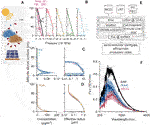2022-04-27 カリフォルニア大学バークレー校(UCB)
Frontiers in Astronomy and Space Sciences誌に掲載された新しい研究では、システムアプローチを用いて、火星に480日間滞在して地球に帰還する6人乗りの長期ミッションを想定し、この2つの技術を直接比較しています。これは、2つの惑星間の移動時間を短縮し、地表での滞在期間を30日以上に延長するミッションで最も可能性の高いシナリオです。
<関連情報>
- https://news.berkeley.edu/2022/04/27/solar-beats-nuclear-at-many-potential-settlement-sites-on-mars/
- https://www.frontiersin.org/articles/10.3389/fspas.2022.868519/full
太陽光発電で有人火星探査が可能に Photovoltaics-Driven Power Production Can Support Human Exploration on Mars
Anthony J. Abel, Aaron J. Berliner, Mia Mirkovic, William D. Collins, Adam P. Arkin and Douglas S. Clark
Frontiers in Astronomy and Space Sciences Published:27 April 2022
DOI:https://doi.org/10.3389/fspas.2022.868519

Abstract
A central question surrounding possible human exploration of Mars is whether crewed missions can be supported by available technologies using in situ resources. Here, we show that photovoltaics-based power systems would be adequate and practical to sustain a crewed outpost for an extended period over a large fraction of the planet’s surface. Climate data were integrated into a radiative transfer model to predict spectrally-resolved solar flux across the Martian surface. This informed detailed balance calculations for solar cell devices that identified optimal bandgap combinations for maximizing production capacity over a Martian year. We then quantified power systems, manufacturing, and agricultural demands for a six-person mission, which revealed that photovoltaics-based power generation would require <<?XML:NAMESPACE PREFIX = “[default] http://www.w3.org/1998/Math/MathML” NS = “http://www.w3.org/1998/Math/MathML” /><10 t of carry-along mass, outperforming alternatives over ∼50% of Mars’ surface.



